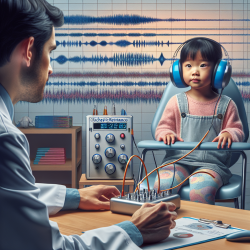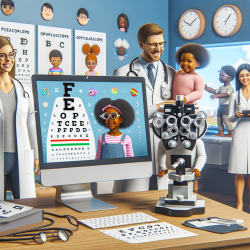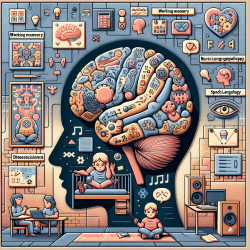Introduction
In the dynamic field of speech-language pathology, practitioners are constantly seeking innovative methods to enhance therapeutic outcomes for children. Recent research titled "Auditory Noise Facilitates Lower Visual Reaction Times in Humans" provides intriguing insights that can be applied to our practice. This study explores how auditory noise can be strategically used to improve visual reaction times, a concept that could have significant implications for therapy involving sensory processing and attention.
Understanding the Research
The study conducted by Pérez-Pacheco et al. (2024) delves into the phenomenon of stochastic resonance, where the right amount of noise can enhance the detection of weak signals. In this context, auditory noise was introduced to human subjects to observe its effect on visual reaction times. The findings revealed that when subjects were exposed to auditory noise at an optimal level, their visual reaction times decreased significantly.
This outcome suggests that auditory noise can serve as a beneficial tool in enhancing human performance in tasks requiring quick visual responses. Such tasks are prevalent in sports, gaming, and potentially in therapeutic settings where rapid visual processing is essential.
Application in Speech-Language Pathology
For practitioners in speech-language pathology, especially those working with children, these findings open up new avenues for intervention strategies. Consider the following applications:
- Attention and Focus: Introducing auditory noise in controlled environments could help children with attention difficulties to better focus on visual tasks, thereby improving their overall engagement and learning outcomes.
- Multisensory Integration: By leveraging auditory noise, therapists can design activities that enhance multisensory integration, crucial for children with sensory processing disorders.
- Reaction Time Training: Activities that require quick visual responses can be augmented with auditory noise to potentially improve reaction times, benefiting children in both academic and social settings.
Encouraging Further Research
While the study provides promising results, it also highlights the need for further research to fully understand the mechanisms at play. Practitioners are encouraged to explore how these findings can be tailored to specific therapeutic goals and diverse child populations. Collaborative research efforts could focus on:
- Identifying the optimal noise levels for different age groups and conditions.
- Exploring the long-term effects of auditory noise on cognitive and sensory processing.
- Developing standardized protocols for integrating auditory noise in therapy sessions.
Conclusion
The integration of auditory noise to enhance visual reaction times presents an exciting opportunity for speech-language pathologists. By adopting a data-driven approach and continuously engaging with emerging research, practitioners can innovate and improve therapeutic outcomes for children. As we strive to create effective and engaging therapy environments, the potential of auditory noise as a tool for enhancing sensory processing should not be overlooked.
To read the original research paper, please follow this link: Auditory Noise Facilitates Lower Visual Reaction Times in Humans.










